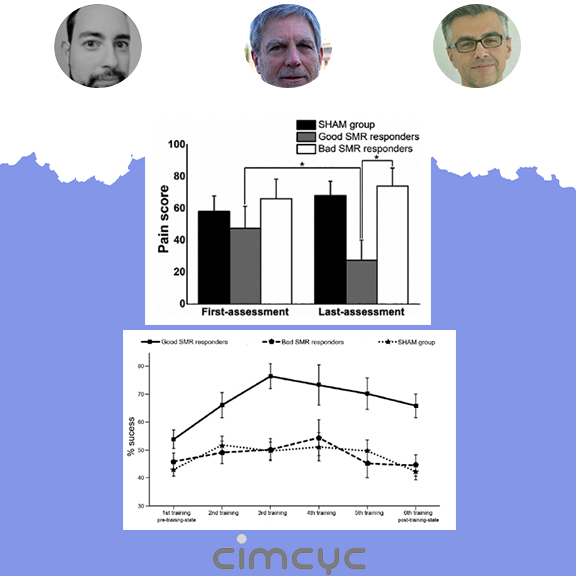
Neurofeedback can induce long-term changes in the brain functional connectivity, but its influence on the connectivity between different physiological systems is unknown. With this research, Guzmán Alba, Jaime Vila and Miguel Ángel Muñoz, CIMCYC researchers, analyzed the influence of neurofeedback on the connectivity between the electroencephalogram (EEG) and heart rate (HR).
To conduct this study, seventeen patients diagnosed with fibromyalgia were divided into three groups: those who responded well to sensorimotor rhythm training (SMR), those who responded poorly to SMR, and the sham group (SHAM). The training consisted of six sessions in which participants learned to synchronize and desynchronize the SMR power. Before the first training session (pre-resting state) and sixth training session (post-resting state), open-eye resting-state EEG and electrocardiogram signals were recorded.
Those who responded well to SMR training reduced pain rates. This improvement in fibromyalgia symptoms was associated with a reduction in SMR connectivity between various brain areas and connectivity between brain SMR power and heart rate. The sham group and non-responders experienced no change in their fibromyalgia symptoms.
These results provide new evidence that neurofeedback is a promising tool that can be used to treat chronic pain syndromes and to obtain a better understanding of the interactions between physiological networks. Moreover, thanks to this study, new research questions are raised: what is the role of the center-peripheral network in chronic pain and what is the effect of neurofeedback on this network.
Contact
Full reference
Alba, G., Terrasa, J. L., Vila, J., Montoya, P., & Muñoz, M. A. (2022). EEG-heart rate connectivity changes after sensorimotor rhythm neurofeedback training: Ancillary study. Neurophysiologie Clinique, 52(1), 58–68. https://doi.org/10.1016/j.neucli.2021.11.003

